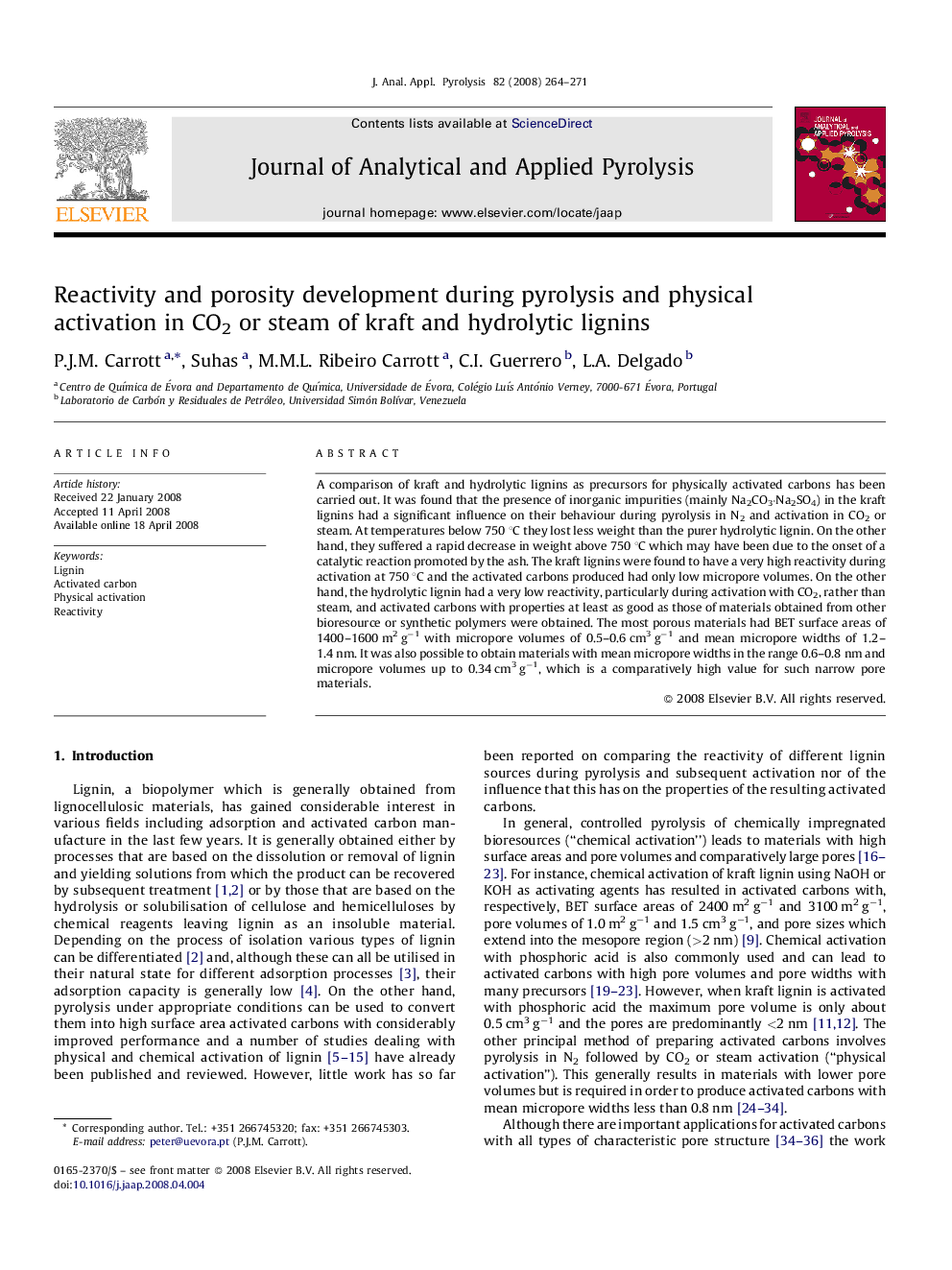| Article ID | Journal | Published Year | Pages | File Type |
|---|---|---|---|---|
| 1197274 | Journal of Analytical and Applied Pyrolysis | 2008 | 8 Pages |
A comparison of kraft and hydrolytic lignins as precursors for physically activated carbons has been carried out. It was found that the presence of inorganic impurities (mainly Na2CO3·Na2SO4) in the kraft lignins had a significant influence on their behaviour during pyrolysis in N2 and activation in CO2 or steam. At temperatures below 750 °C they lost less weight than the purer hydrolytic lignin. On the other hand, they suffered a rapid decrease in weight above 750 °C which may have been due to the onset of a catalytic reaction promoted by the ash. The kraft lignins were found to have a very high reactivity during activation at 750 °C and the activated carbons produced had only low micropore volumes. On the other hand, the hydrolytic lignin had a very low reactivity, particularly during activation with CO2, rather than steam, and activated carbons with properties at least as good as those of materials obtained from other bioresource or synthetic polymers were obtained. The most porous materials had BET surface areas of 1400–1600 m2 g−1 with micropore volumes of 0.5–0.6 cm3 g−1 and mean micropore widths of 1.2–1.4 nm. It was also possible to obtain materials with mean micropore widths in the range 0.6–0.8 nm and micropore volumes up to 0.34 cm3 g−1, which is a comparatively high value for such narrow pore materials.
